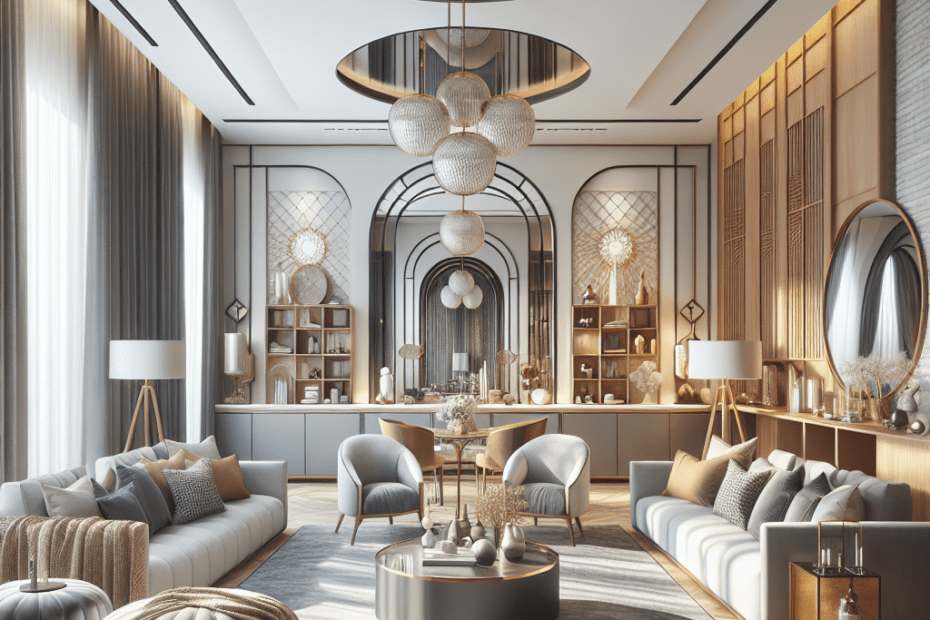“`html
The Power of Symmetry in Modern Home Interiors
In the enchanting world of interior design, symmetry has emerged as a powerful tool to transform modern spaces. They say that symmetry is the secret ingredient that brings harmony, balance, and a sense of order to a room. As homeowners and decorators increasingly gravitate toward minimalistic and clean aesthetics, symmetry in modern design stands out as a beacon of elegance and refinement.
The Appeal of Symmetry in Modern Design
Symmetry in modern design is more than just a visual treat; it plays a significant role in how people perceive and experience a space. At its core, symmetry creates balance by ensuring that elements on either side of a focal point mirror each other, leading to a cohesive and pleasing composition. This approach is particularly appealing in contemporary homes where simplicity and functionality reign supreme.
Symmetry’s Psychological Impact
Research shows that humans are naturally drawn to symmetry. According to a study published in the Journal of Vision, symmetrical layouts are more likely to be remembered and preferred over asymmetrical configurations (Source). This intrinsic attraction can be traced back to evolutionary patterns where symmetry often indicated health and stability. By incorporating symmetry in modern design, homeowners can create spaces that feel not only organized but also inherently comfortable.
Real-World Examples of Symmetry
Examples of symmetry in modern home interiors are abundant. Consider the classic arrangement of a sofa with identical lamps on either side, or a dining table flanked by evenly spaced chairs. These setups offer a sense of predictability and equilibrium. Below is a table illustrating common elements of symmetry in different rooms:
| Room | Symmetrical Element |
|---|---|
| Living Room | Sofa with lamps and side tables on both ends |
| Bedroom | Bed with matching nightstands and lamps |
| Dining Room | Table with chairs evenly spaced |
| Home Office | Desk with equal shelving units on both sides |
Statistical Insights
The affinity for symmetry in modern design is not merely a stylistic preference but is backed by data. A survey conducted by Statista found that 71% of interior designers consider symmetry an essential component in creating aesthetically pleasing home spaces. Additionally, 68% of homeowners cited symmetrical design as a reason for purchasing specific furniture pieces, indicating a clear preference (Source).
Incorporating Symmetry in Design
Achieving symmetry in a modern interior involves a careful and intentional arrangement of furniture, artworks, and decor. They could start by identifying the room’s focal point, which could be a fireplace in the living room or a headboard in the bedroom. From there, designers can create a mirrored setup by placing identical or similar objects on either side. It is crucial to ensure that the elements have a visual match to achieve a symmetrical balance.
Challenges and Considerations
While symmetry in modern design brings numerous benefits, it is important to avoid excessive rigidity. Too much symmetry can make a space feel overly formal and less inviting. To counteract this, designers often introduce subtle asymmetrical elements or variations in texture and color. This approach maintains balance while adding depth and character to a room.
Key Takeaways
- Symmetry in modern design creates balance, harmony, and a pleasing aesthetic.
- Humans are naturally drawn to symmetry due to its psychological impact.
- Symmetrical design elements are prevalent in various home interiors like living rooms, bedrooms, and dining areas.
- Statistical data supports the preference for symmetry in both designers and homeowners.
- While symmetry is powerful, incorporating subtle asymmetrical details can enhance the overall appeal.
Frequently Asked Questions
- What is symmetry in modern design?
Symmetry in modern design involves arranging elements on either side of a focal point to mirror each other, creating balance and harmony. - Why do people prefer symmetrical designs?
People prefer symmetrical designs because they are visually appealing and create a sense of balance and order in a space. - How can they incorporate symmetry into their homes?
They can achieve symmetry by using identical furnishings or decor items on either side of a focal point, such as a bed, fireplace, or window. - Are there drawbacks to using too much symmetry?
Yes, excessive symmetry can lead to a space feeling too formal or monotonous. It’s beneficial to incorporate asymmetrical elements for added interest. - How does symmetry affect the perception of space?
Symmetry positively affects the perception of space by making it appear orderly and pleasing, which can enhance the overall comfort and functionality.
“`
